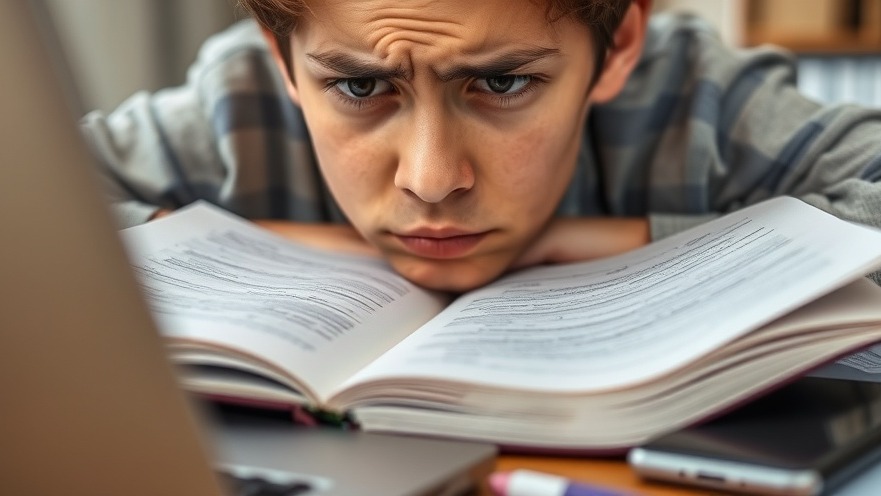
Understanding ADHD Through a Mindful Lens
Living with ADHD in Everyday Life
For many people living with Attention Deficit Hyperactivity Disorder (ADHD), daily life can feel like steering a ship through unpredictable waves.
A simple morning routine may turn into a rush of misplaced keys, forgotten tasks, and rising stress. These aren’t just personality quirks—they’re the real effects of ADHD’s impact on attention and executive function.
What’s encouraging is that research is showing how mindfulness—bringing gentle awareness to the present moment—can help calm those waves.
By practicing mindfulness, individuals with ADHD can learn to pause, breathe, and approach challenges with more clarity and compassion.
ADHD Is More Than Meets the Eye
ADHD isn’t just about being “hyper” or “easily distracted.” At its core, ADHD affects executive function, the mental skill set that helps people plan, prioritize, and manage emotions.
When these systems falter, everyday situations can feel overwhelming.
Consider the college student who sits down to study, only to realize two hours later that they’ve reorganized their desk, scrolled through three social feeds, and answered half a dozen texts—but never opened the textbook.
This isn’t laziness; it’s how ADHD rewires attention.
As Dr. Russell Barkley, a leading researcher on ADHD, explains:
“ADHD is not a disorder of knowing what to do; it is a disorder of doing what you know.”
Understanding this distinction helps shift the conversation away from blame and toward strategies that support brain function. Mindfulness is one of those strategies.

Mindfulness as a Companion, Not a Cure
Mindfulness isn’t about sitting cross-legged in silence for hours. For someone with ADHD, that idea alone can feel impossible. Instead, it’s about small, everyday moments of paying attention—with kindness instead of criticism.
Dr. Lidia Zylowska, psychiatrist and author of The Mindfulness Prescription for Adult ADHD, notes:
“Mindfulness teaches us to notice our attention drifting without judgment, which is crucial for individuals with ADHD.”
Rather than replacing therapy or medication, mindfulness works alongside them. It helps create space between an impulsive thought and the action that follows, giving the brain room to respond instead of react.
Practical Mindfulness Tools for ADHD
Here are ADHD-friendly mindfulness practices that don’t require long periods of silence or stillness:
Mindful Pauses Before starting a new task, pause for three breaths. This tiny ritual works like a reset button for the brain.
Sensory Grounding (5-4-3-2-1 Method) When stress or distraction spikes, notice: 5 things you see, 4 things you hear, 3 things you feel, 2 things you smell, 1 thing you taste. It brings scattered attention back to the present moment.
Movement-Based Mindfulness Instead of forcing stillness, try walking meditation or stretching. Sync your breath with your steps. Movement channels restlessness into focus.
Body Scan Take three minutes to notice where tension lives in your body—jaw, shoulders, back—and release it with your breath.
Mindful Journaling End the day by jotting down one moment of distraction and how you responded. This isn’t about judgment—it’s about learning patterns with curiosity.

Real-Life Applications: Mindfulness in Action
Mindfulness becomes powerful when applied to daily life.
Morning Routines For one Sacramento mom with ADHD, mornings used to unravel fast: missing shoes, cold coffee, tears before school drop-off. Now she takes one minute to sit on the edge of her bed, eyes closed, focusing on three breaths. She says that pause sets the tone for the entire day.
Workplace Focus A marketing professional with ADHD noticed she’d lose hours bouncing between emails and tabs. By setting a timer for a 15-minute “focus sprint” and practicing mindful redirection each time she drifted, she gradually trained herself to complete projects in smaller, calmer chunks.
Parenting with ADHD Parents often describe frustration rising quickly when kids act out. A mindful pause—just three deep breaths before speaking—can be the difference between snapping and responding with calm.
Relationships Mindful listening, giving full attention without planning a response, helps partners feel truly heard. This small shift reduces miscommunication and strengthens connection.
Mini-Plan: Starting Your Mindfulness Journey with ADHD
You don’t need to master mindfulness overnight. Small steps are more effective than trying to overhaul everything at once. Try this 5-day starter plan:
Day 1 – Before checking your phone, sit quietly and take three slow breaths.
Day 2 – Take a 5-minute mindful walk. Focus on your steps and what you hear around you.
Day 3 – Write down one situation where ADHD distracted you. Reflect on it without blame.
Day 4 – Before bed, name one thing you did well today, no matter how small.
Day 5 – Try a guided meditation app designed for ADHD or beginners, like Headspace or Insight Timer.
Remember: the goal isn’t perfection—it’s building awareness one moment at a time.

Building Emotional Resilience
ADHD often comes with anxiety, self-criticism, or depression. Mindfulness helps soften those struggles by teaching emotional regulation.
Dr. Mark Bertin, a developmental pediatrician, puts it this way:
“Mindfulness provides a way to manage attention and emotions more effectively, helping people calm their minds and respond instead of react.”
Simple practices like pausing to breathe, noticing emotions without judgment, or grounding in the senses can reduce overwhelm and build resilience.
A Brighter Future with Mindfulness
Mindfulness doesn’t erase ADHD, but it helps people live with more clarity and compassion. Over time, these practices strengthen focus, ease emotional turbulence, and reduce cycles of self-blame.
For caregivers, teachers, and employers, introducing mindfulness can create environments that feel more inclusive and supportive. ADHD isn’t about weakness—it’s about difference. Mindfulness helps unlock strengths within that difference.
Take Action: Begin Today
If ADHD has you feeling like life is moving too fast, mindfulness is an anchor that can slow things down. Start small. Try a mindful pause right now. Notice your breath.
Each mindful moment is progress. And with practice, those small shifts add up to a calmer, more intentional life—one where ADHD doesn’t control the day, but becomes part of a journey toward resilience and growth.
Looking for ways to stress less and stay centered? Visit Mind Matters for quick mindfulness tips, then head back to Sacramento Living Well for more ways to feel your best every day.
---
Authored by the Sacramento Living Well Editorial Team — a publication of DSA Digital Media, dedicated to highlighting wellness, local living, and inspiring community stories throughout Greater Sacramento.
 Add Row
Add Row  Add
Add 





Write A Comment